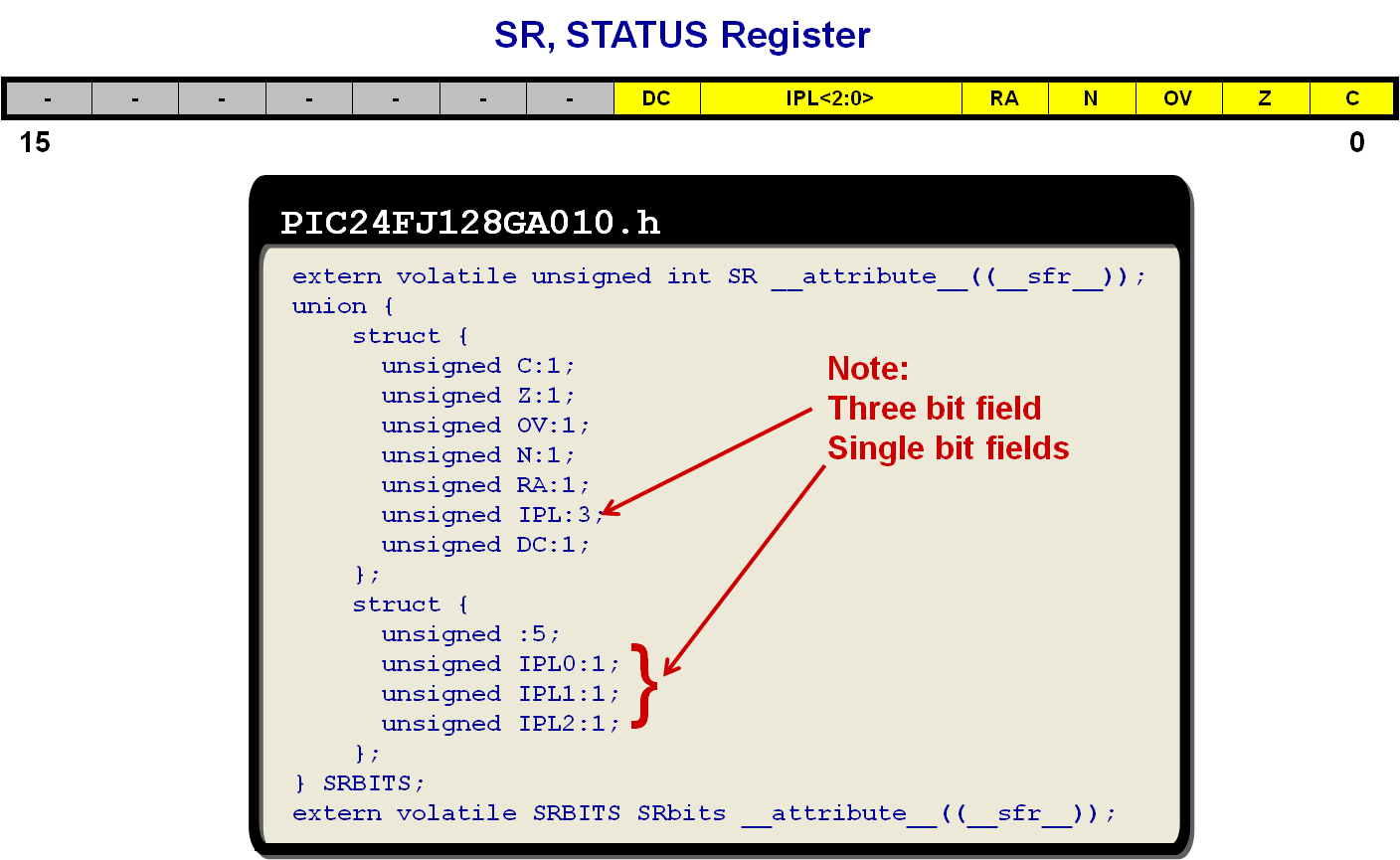Unions
Unions are similar to structures but a union’s members all share the same memory location. In essence a union is a variable that is capable of holding different types of data at different times.
Unions:
- May contain any number of members
- Members may be of any data type
- Are as large as their largest member
- Use exactly the same syntax as structures except struct is replaced with union
Creating an Union
Syntax
union unionName
{
type1 memberName1;
…
typen memberNamen;
}
Example
|
1
2
3
4
5
6
7
|
// Union of char, int and floatunion mixedBag{ char a; int b; float c;} |
Purpose of a Union
Unions are similar to structures EXCEPT that struct by itself outside of a union assigns a new memory location upon declaration
union allows the same memory location to be viewed and manipulated as different data types.
Example
|
1
2
3
4
5
6
7
8
9
10
11
12
|
union{ int Word; struct { char Byte1:8; char Byte2:8; }structBytes;}myVar;myVar.Word = 0xFFFF; // myVar = 1111111111111111myVar.structBytes.Byte1 = 0xF0; // myVar = 0000000011110000myVar.structBytes.Byte2 = 0xF0; // myVar = 1111000011110000 |
Creating a Union with typedef
Syntax
typedef union unionTagoptional
{
type1 memberName1;
…
typen memberNamen;
} typeName;
Example
|
1
2
3
4
5
6
7
|
// Union of char, int and floattypedef union{ char a; int b; float c;} mixedBag; |
Unions Memory Storage
Union variables may be declared exactly like structure variables. Memory is allocated to accomodate the union's largest member.
Examples




Example from Typical .h File

